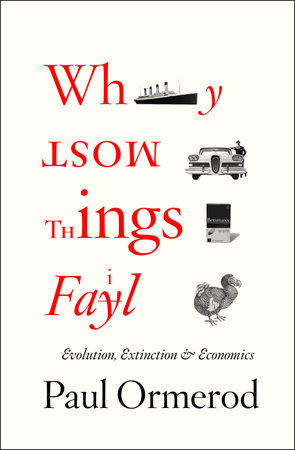Author Q&A
Q: What do you think is the most exciting development in the area of brain research in the past five years?
A: There have been so many startling developments in the past five years–the completion of the genome that will really help us to open up the black box as never before; the improvement of our imaging tools with the MRI and other parallel imaging and measuring devices; an increase in our understanding of the development and complexity of the brain; and a new humility that helps to remind us of the interactive, organic puzzle we are hoping to solve and understand. But the most exciting development for me has been on the side of plasticity and rejuvenation of the brain itself. We are defining the steps involved with the creation of memories, and strengthening the bonds between the neurons, which is what a memory actually is. We now know a lot about how to strengthen the nerves themselves, have good leads as to how new nerve cells are made, and have discovered that the brain is constantly making new nerve cells through the life cycle. We used to believe that once the brain’s rapid growth was complete (around the age of three), the ability to make new nerve cells was gone. We couldn’t hope to replace that which was lost to disease, toxins, non-use, or age. We knew we could forge compensatory connections between other nerve cells but the idea that we spontaneously regenerate nerve cells was not even thought to be possible until now.
Q: You write, "Discoveries in the next thirty years will transform not merely our world but our very selves." Can you give us a hint of the radical changes on our horizon?
A: We will know what to do to change our brains to a much greater degree than we do at present–what foods to eat, how much and what kind of exercise to do, why we sleep (from the brains’ perspective) and how we can utilize it, how to train specific brain parts and brain functions. For instance, we may find that allowing young children to develop the skills to open an intricate box may lead to a brain that is more ready to do math than others. We already know that if the child learns to play a musical instrument, then reading and arithmetic are much easier for them. This is probably due to the activation and training of certain neuronal structures that are later used in part for math and reading skills. The right kind of computer games and the use of virtual reality could lead to all kinds of skill development, mood changing and help make learning easier and more enjoyable.
Q: You mention that we can train our brains for health, vibrancy, and longevity. How exactly can we do this?
A: Our brains are plastic; we can remake them to a degree. When we learn new information, new skills, new relationships, we are calling on our brains to be malleable. That memory becomes our brain and our brains become that memory. One of the best ways to keep one’s brains healthy and young is to constantly use it, to constantly to be challenging ourselves to learn more, to see and do new things. Our brains are adaptation machines and they need to be used in order to stay healthy. If we do not use the available nerve cells, they will atrophy much like our muscles and bones. By learning new things and taking new challenges, we make more connections and also release a substance that I call "Miracle Grow" or BDNF (Brain Derived Neurotrophic Factor). This is the first of many factors that we have recently discovered that help to strengthen newly formed connections and help nerve cells to become healthier and happier. It is also a major substance that promotes the growth of new nerve cells themselves.
Q: The brain’s cortex, you explain, is what makes us human. Can you explain how?
A: The cortex is the ultimate learning and adapting machine. It is the top part of the brain, a six layer bark (cortex) that is the last to evolve. The six layers contain many cells that get information from all over the brain and process it. This is where all of our learning and adjusting takes place. We take in information in the cortex, which is extremely plastic and ready to change, and that information is processed and a response to it is created.
For instance, if we are to learn a new skill–a golf swing, for example–we first look at the mechanics of the swing and try to copy what we see. This information is held in our cortex while we adjust and correct any errors, eventually sculpting out the final product. Once we get it right, we practice by using our cortex and the rest of the brain until the swing becomes automatic and we let the subcortical areas (the lower parts of the brain which operate more automatically) take over and eventually we (hopefully) swing like Tiger Woods!
Thoughts and emotions make us human. Once we develop our own specialized programs, the lower brain regions are able to take over. But as humans, we naturally think about ideas and responses in the abstract, consider the proper sequence and the consequence of our actions, remember our history and anticipate the future (also a cortical function).
Q: Perception is much more complex than most of us realize. Please describe how the brain is involved in perception.
A: Perception of the outside and inside worlds is a function of our five senses (sight, sound, touch/ pressure, taste and smell). Stimulation to these senses is transmitted first to the brain stem where a few stops and way-stations that process information and send feedback to the perceiving organs that control head and body movement–thus helping us to get more of the perception by turning our heads to the sound or the sight, closing our pupils, etc. Stimulus is then sent to the thalamus (except in the case of smell which bypasses the thalamus and has the quickest journey to the cortex) where more processing and feedback take place and information is sent on to the amygdala for response. Next the signal reaches the cortex, from which it is distributed all over the body. This occurs in the posterior portion of the brain, which is responsible for perception input of information. Finally, through what is called the ‘binding’ process we experience perception. Each step is crucial, and damage or alteration in any of the way-stations can cause havoc with how and what we perceive.
Q: Your compare consciousness to a symphony orchestra. Can you explain this analogy?
A: In short the brain has to be acting as a whole to create consciousness; that is to say that many parts have to be functioning together and with the right rhythm and pitch for us to be conscious. Consciousness is as yet undefined neuroanatomically, but we do know that there is a need for a reverberating circuit of information to be flowing back and forth for there to be consciousness.
Q: Is there a scientific reason why events that cause us great joy or pain are easier to recall than other memories?
A: Definitely. Our memories are strengthened by the intensity of the emotion that is associated with them. A term called "limbic taggin" indicates that as the information comes into the thalamus and then to the cortex we have an emotional response. The degree to which we respond will focus our attention on that information, and also help to ready the neurons that are involved with storage and cataloguing of our memories to be more ready to fire–the more rapid the firing of the neurons, the stronger the memory.
We know the chemistry involved in this process and are beginning to dissect the mechanics of how intensity neurotransmitters cause the nerve cells involved with holding memory to become altered, readied and strengthened. Every time a part of the emotional state connected with that memory is stimulated, the memory returns along with the intense emotional response. For example, in PTSD (post traumatic stress disorder) a loud sound may trigger the memory of being shelled in Viet Nam in a traumatized soldier which, as it is replayed, makes the whole experience more vivid and ultimately readies it to be recalled again and again. The same response occurs with joyful or exciting memories.
Q: Is there really a specific site in the brain responsible only for recognizing and naming vegetables? Why is there such specialization?
A: Yes, there seems to be a way-station or center in the left hemisphere of the brain that when damaged or manipulated by experimenters can lose the ability to name specific categories of objects and functions–like vegetables, for example. While this is variable across individuals, there is a pattern of "naming sites" for all kinds of nouns, verbs, proper names, etc. The biggest surprise in recent years has been how the maps of our language areas vary from person to person. They retain the pattern of distribution but they vary as to where they are located in each brain.
Q: You are an expert on ADHD (Attention Deficit Hyperactivity Disorder). How does the brain of an individual with ADHD differ from a "normal" brain?
A: The ADHD brain differs from a normal brain in a variety of ways. Geographically, for instance, there are areas in the caudate, corpus callosum, cerebellum that across a number of studies show a difference or abnormality in size or shape as compared to a normal brain. These happen to be areas that are crucial in what we know as the attention system–differences in anatomy in this area may speak to differences in function and ability. There are also differences in physiological functioning that have been demonstrated. For instance during a repetitive boring task, a person with ADHD will use less glucose in oxygen in the prefrontal cortex area–therefore during times of low stimulation, an ADHD person will respond without much forethought, and often make errors in judgment and get distracted from their final goal. Recent studies also show that individuals with ADHD have more of a key enzyme than they should, reiterating evidence from a variety of domains that there are differences between an ADHD and a normal brain.
Q: How are movement and language (gesturing and speech) linked?
A: The integration of gesture and language is very deep. Gestures do not merely convey what is said, but shape a thought language cannot always express. A meaningful gesture within a conversation carries with it its own gestalt and tends to convey much more of the nonlinear, indirect communication that adds to the meaning of conversations. Movement and language are also thought to be further linked by proponents who suggest that as we evolved and improved fine motor control of our muscles that this developing brain structure was "hijacked" to begin to perform the complicated and sequential task of language.
Q: Explain the "set point" theory. Is there a way to permanently raise the basic level of happiness in a depressed person?
A: According to the "set point" theory, people have an inborn set point for mood, similar to the set point for weight. This set point is one’s basic level of happiness or sadness, which is subject to the ups and downs of life but will inevitably return to some kind of base line, (even in people who have dramatic changes in their life circumstances.) Research with lottery winners and victims of spinal cord injury have shown that despite these life-changing events, people’s moods return to their set point, often within a few months. If you are generally a dour individual and this is a reflection of your set point, then it is hard to imagine any change will be long lasting.
Q: Laughter, like love, is more complex than we may have thought. Describe the neurochemistry of laughter.
A: Laughter functions as a kind of social signal–like a smile or scowl. Indeed, studies have shown that people are 30 times more likely to laugh in social settings than when they are alone. Even nitrous oxide (laughing gas) loses much of its potency if taken in solitude. While we don’t fully understand the neurochemistry of laughter, we may have found the laughter button at least in one girl. In 1998 doctors at UCLA reported that they were able to make a 16-year-old girl laugh by stimulating a tiny region in her left frontal lobe. They were testing her with an electrode to try to find the source of her epileptic seizures. When they stimulated the small region with an electrical current, the girl burst out laughing. She was asked to perform various tasks, like naming objects, reading, counting, and extending her forearms, but despite the different activities, she consistently laughed when the same area was stimulated. Even more interesting was that, although the girl’s laughter was being artificially triggered, each time it occurred she provided a different explanation for it, attributing it to whatever object or action was in front of her at the time. She saw a picture of a horse as hilarious, giggled over a book she was reading, and one time told the researchers, "You guys are just so funny." So perhaps there is in all of us a laughing center that could be stimulated in a variety of ways to help change the grump into a humor-loving optimist.
Q: What are the new findings linking exercise to mental health? How does diet affect the brain?
A: There are many new findings that show the impact of diet and exercise on the brain. For instance, aerobic exercise causes the release of BDNF or the "Miracle Grow" substance that I mentioned earlier, which helps to keep the brain young, flexible, growing and adaptable. Exercise also increases the release of important neurotransmitters such as dopamine, serotonin, norepinephrine, and acetylcholine. Translate this into modern day jargon and one can say that exercise is like taking a little Prozac and a little Dexedrine to help us through the day.
Diet is also coming of age in neuroscience. Here results are more scattered because of the wild variability in our brains but in general one can surmise that the brain needs a steady supply of glucose or carbohydrates to fully function to its capacity. The best way to achieve this is to have a diet rich in protein, the best long-term source of glucose as it is metabolized in the body. We have also learned about the magic of the fats and are learning about the benefits of taking supplements to help the brain functions and remain healthy. The B vitamins, Vitamin E and C, adequate amounts of Iron and Magnesium are also necessary to keep the brain working well and staying healthy longer.




























